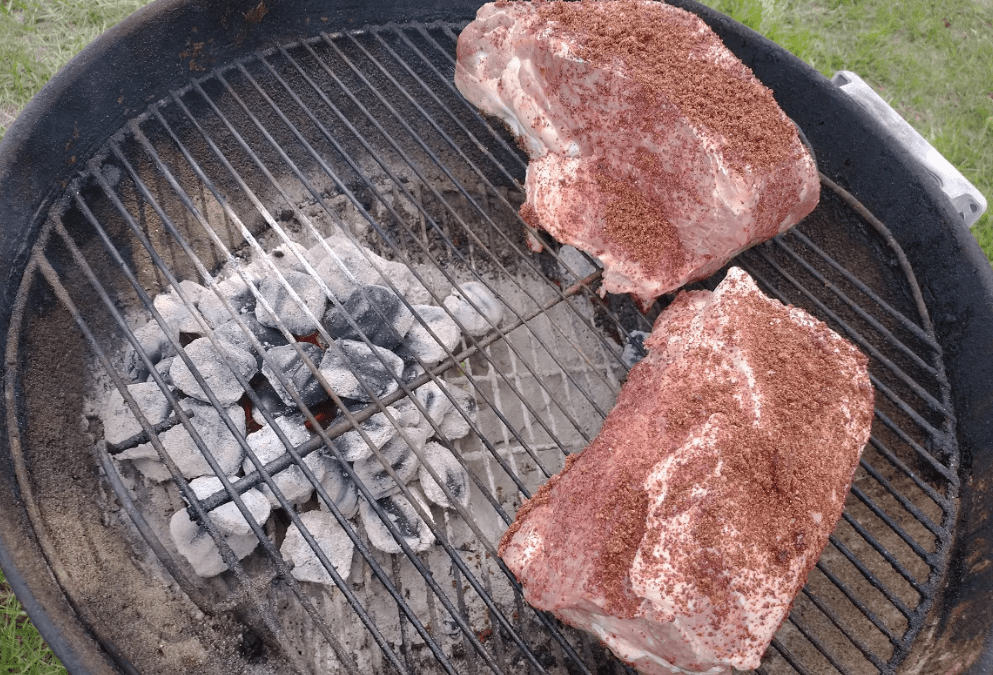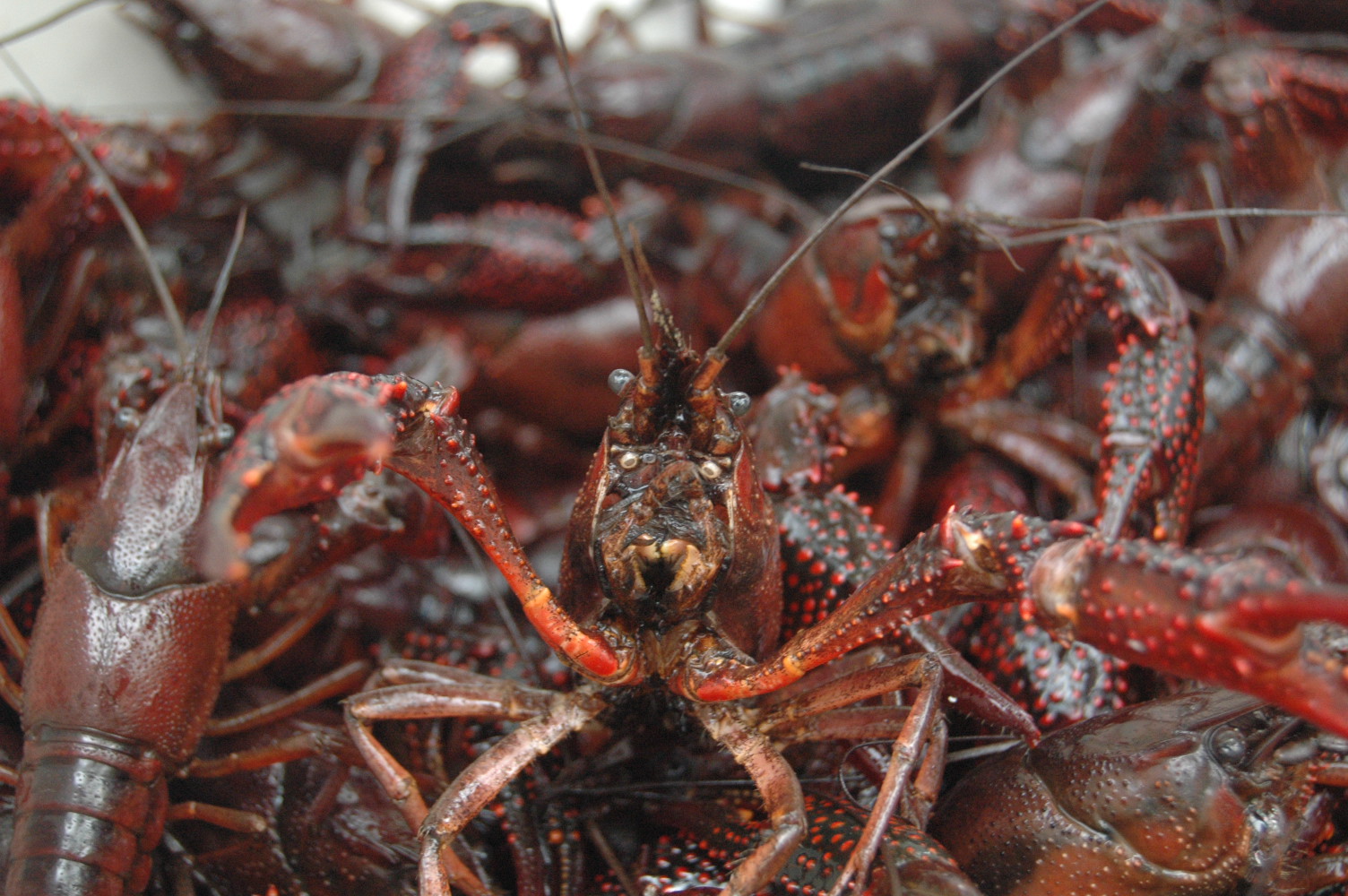How to use less desirable wild game cuts to make a great South Carolina Barbecue Hash
“No one knows exactly what the ingredients of Whatchagot Hunter’s Stew are because there is a firm rule against anyone shining a light into it.” – Patrick F. McManus
“Only a fool eats green hash.” – Patrick F. McManus
If your childhood was splendid, as mine was, you grew up lurking around cricks, getting lost in the wilderness, eating Whatchagot Stew on camping trips and reading the late, great outdoor writer Patrick F. McManus.
If not, you may be wondering what in the heck is in Whatchagot Stew, and so has everyone who has ever attempted to digest it. According to my boyhood hero McManus, Whatchagot Stew was a gastrological oddity you had at fish camps or hunting camps when the camp cook – the lunatic who drew the last straw – scrounged the cabin or the freezer, threw everything he found into one big pot, and added some fresh wild game. Depending on whether or not the camp cook was taking his medication that day, and if he had a grudge against the other hunters or anglers, W. Stew could range in taste from downright delightful to the cause of death mentioned in your obituary.
For me, a farm boy and child of the South Carolina Lowcountry, barbecue hash was our Whatchagot tradition. Stewed down pork, beef, sometimes offals, onions and potatoes were ground up, sauced up and dashed up with spices and served over rice in Granny’s kitchen and in many barbecue joints scattered around the Palmetto State countryside.
More often than not, the DeWitt family’s usual hash fix was found just a few miles down the road at Lester’s Barbecue, an all-you-can-eat, family-owned pit stop still operating today where there still stands a sign asking, “Have you thanked Him Today?” and they don’t serve beer with their buffet. Most Friday nights, after Daddy got paid at “The Plant” where pretty much everyone in our small town worked, Momma mysteriously developed an ailment and said she was too ill to cook, but she still had an appetite, so we would all load into the back of Pop’s GMC pickup and go visit Uncle Lester. There you could always find pit-cooked whole hog barbecue, hash and rice, any kind of vegetable or green you could imagine, served with iced sweet tea, banana pudding and a York Peppermint Patty for desert. I always thanked Him before I ate, and I always took that all-you-can-eat sign as a challenge.
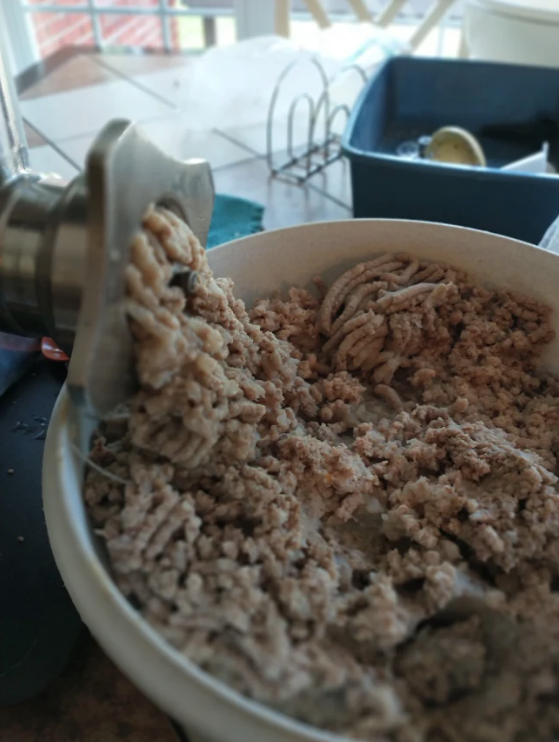 But on special occasions, families like ours gathered at the old farmsteads to make our own sausage, country liver pudding and hash, often called hog head hash, all cooked over an open fire in black kettles older than our grandparents. Back then, folks didn’t waste much, so the hog head (sans brain and eyeballs) would be cooked off the bone along with a little liver and other parts we won’t mention. Nowadays, most folks use whole pork shoulders or Boston Butts, but that’s okay. Every hash is different, as is every hash master.
But on special occasions, families like ours gathered at the old farmsteads to make our own sausage, country liver pudding and hash, often called hog head hash, all cooked over an open fire in black kettles older than our grandparents. Back then, folks didn’t waste much, so the hog head (sans brain and eyeballs) would be cooked off the bone along with a little liver and other parts we won’t mention. Nowadays, most folks use whole pork shoulders or Boston Butts, but that’s okay. Every hash is different, as is every hash master.
Travel the back roads and interstates of South Carolina – which is pretty much the sole, proud home of barbecue hash – and you will find many varieties of this culinary creation. While the base ingredients are the same, some folks add pork liver; others will shoot you if you throw that in their pot. Some hashes are tomato sauce or ketchup based, some are mustard based, and others rely on vinegar and black pepper. As for me, I never met a hash I didn’t like.
Or as that zany “outdoor chef” McManus wrote, “There is yellow hash, brown hash, gray hash, black hash and green hash. Only a fool eats green hash.”
Want to make your own?
If I was facing a firing squad and had to choose a last meal, I would select barbecue hash over rice for three reasons: it’s tasty, it reminds me of my childhood and would help my life flash before my eyes, and it takes hours to make, giving me a little more time on this sweet earth.
Hash is one of those meals that you and your camp buddies can team up on, then sit back and have a few cold ones while you stir and let it simmer. It takes time, but it’s worth it, and by the time the hash is right, you will be “right.”
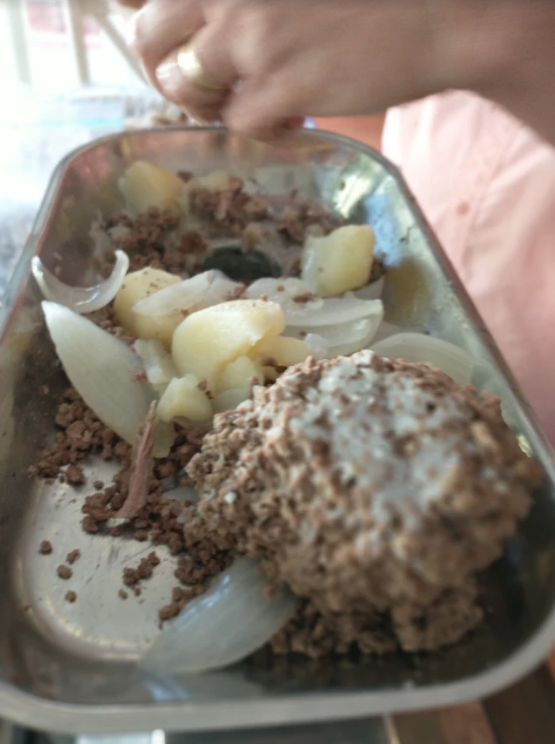 Hash has other advantages for the outdoorsman. Let’s say that it is summer, and you still have too much venison and wild boar in the freezer. All the choice cuts are gone and you are down to the roasts and soup bones, with a new deer season right around the corner. So what do you do? Why not make hash and invite family and friends?
Hash has other advantages for the outdoorsman. Let’s say that it is summer, and you still have too much venison and wild boar in the freezer. All the choice cuts are gone and you are down to the roasts and soup bones, with a new deer season right around the corner. So what do you do? Why not make hash and invite family and friends?
Hash is also the perfect vessel for those tougher cuts of meat, like that gnarly old buck you are gunning for, as well as those “gamier” wild boars. By the time you stew it with onions and potatoes, grind it, season it and sauce it, it will taste like something heavenly from the finest Southern restaurant that you should be charging top dollar for.
Hash is also versatile. It’s great over any type of rice, in a bowl by itself, on grits, on toast; I’ve even seen it eaten on a hot dog.
So let’s get started.
Lowcountry BBQ Hash
Ingredients:
- 9-10 pounds of pork (you can use store-bought pork roast or wild boar. Boston Butt or whole shoulder have just the right lean to fat ratio)
- 5 pounds of potatoes
- 3-4 large onions
- 3-4 pounds of ground beef or ground venison
- 90 ounces of ketchup
- 4-10 ounce bottles of Heinz 57 sauce
- ½ cup lemon juice
- 1 cup sweet pickle juice
- ¼ cup Worcestershire sauce
- ½ cup white vinegar
- 1 ½ cup sugar
- 3 tbsp. Hot sauce
- Salt and pepper to taste
- 3 ½ cups broth from meat (add more as needed to achieve the desired consistency)
- ½ cup dill pickle juice (optional)
- Healthy dash of barbecue rub seasoning (optional)
Peel potatoes and onions, cutting into chunks, and place into a large stock pot. Debone the pork and cut into small-to-medium pieces, or cook it whole and then debone it (the bones add flavor, but it’s easier to work with when the meat isn’t hot). Add to the vegetables and cover with water. Season with salt and pepper, then bring to a boil and cook until the meat is done.
Brown ground beef and drain.
Remove meat and onions from the pot, but save the broth.
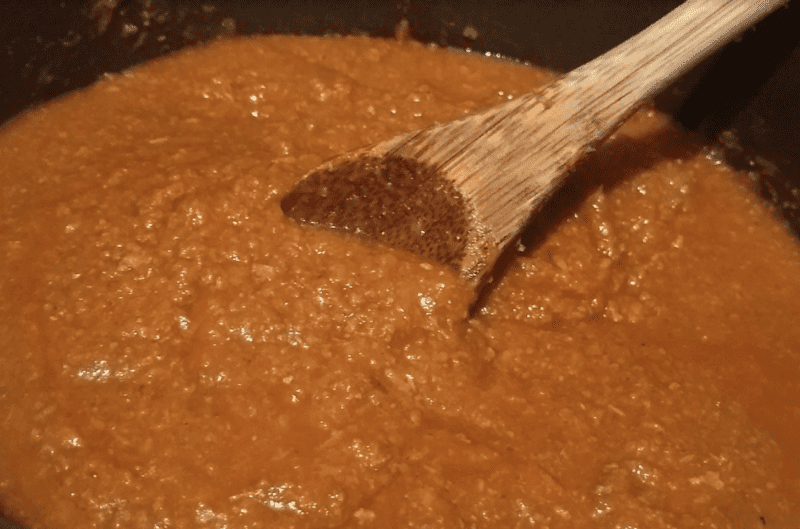 Grind pork, vegetables and ground beef twice and return to the stock pot or a larger pot to cook outdoors over gas. Stir in remaining ingredients and simmer over low heat for 1-2 hours, being sure to stir constantly to avoid sticking and burning. Sample it from time to time as you stir, and feel free to tweak the ingredients to suit your taste: more sweet, more sour, etc.
Grind pork, vegetables and ground beef twice and return to the stock pot or a larger pot to cook outdoors over gas. Stir in remaining ingredients and simmer over low heat for 1-2 hours, being sure to stir constantly to avoid sticking and burning. Sample it from time to time as you stir, and feel free to tweak the ingredients to suit your taste: more sweet, more sour, etc.
Serve over plain rice or Country Style Baked Rice. I highly recommend a few dill pickle chips and some pickle juice dribbled on top, along with a little hot sauce.
Country Style Baked Rice
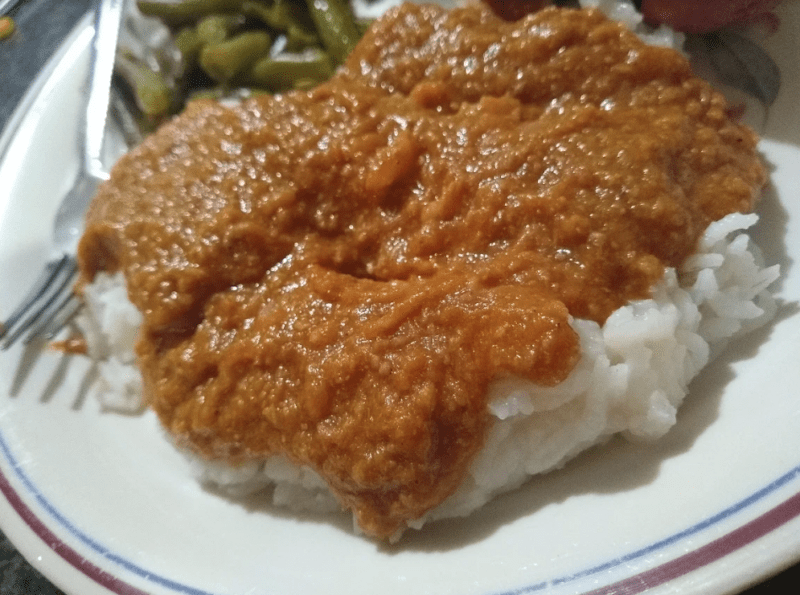 Ingredients:
Ingredients:
- One cup of white rice
- One cup of water
- One cup of chicken broth
- 1 medium onion, sliced
- 2 heaping tablespoons of margarine
- Salt and pepper to taste
In a deep dish pan or casserole baking dish, add rice, liquids, and onion. Stir. (For more flavor, you can substitute the cup of water for a second cup of broth.) Add butter, salt and pepper.
Cover with aluminum foil and bake at 350 degrees for one hour.
 Eat Like a Wildman is a collection of the top rated wild game and fish recipes that Sports Afield magazine has published over the last 110 years. Lifelong food critic and cookbook author, Rebecca Gray selects and infuses a wonderful-tasting standards with her own culinary wizardry and provides instruction on the best methods for preparing fish and wild game to cook. Buy Now
Eat Like a Wildman is a collection of the top rated wild game and fish recipes that Sports Afield magazine has published over the last 110 years. Lifelong food critic and cookbook author, Rebecca Gray selects and infuses a wonderful-tasting standards with her own culinary wizardry and provides instruction on the best methods for preparing fish and wild game to cook. Buy Now

